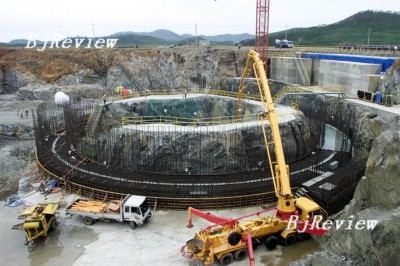
The joint document issued by the six parties involved in the North Korean nuclear issue---the United States, North Korea, China, South Korea, Japan and Russia---following their talks in Beijing on February 13 marked a key step toward the denuclearization of the Korean Peninsula. The upcoming sixth round of the six-party talks will focus on concrete actions that will be discussed in the five working groups established under the document. Negotiations on the steps North Korea is to take to abandon its nuclear programs and the normalization of Washington-Pyongyang relations are expected to top the talks' agenda.
Negotiations on the two issues are closely interrelated. Washington holds Pyongyang's scrapping of its nuclear programs as a precondition for normalizing bilateral relations. From Pyongyang's perspective, however, a complete abandonment of its nuclear programs is difficult as its larger goal of normalizing ties with Washington to reverse its unfavorable strategic status has yet to materialize.
To address the concerns of each other, both parties have to make strategic changes. So, North Korea and the United States may well be on the eve of a historic transition in their relations. Whether the transition can be realized hinges on the two countries' strategic needs and judgments of their internal and external environments.
Pyongyang's choices
The first step North Korea promised to take in the February 13 joint document is significant. When it disables its nuclear facilities in Yongbyon, North Korea will receive an initial shipment of emergency energy assistance equivalent to 50,000 tons of heavy fuel oil. However, this is only a tentative move made by North Korea and the international community despite its relevance to future strategic judgments.
High on the international community's list of concerns is whether North Korea's promise is a mere stalling tactic or heralds the beginning of a strategic adjustment. To answer this question, we need to look at both North Korea's current state of affairs and development trajectory since the end of the Cold War.
| 